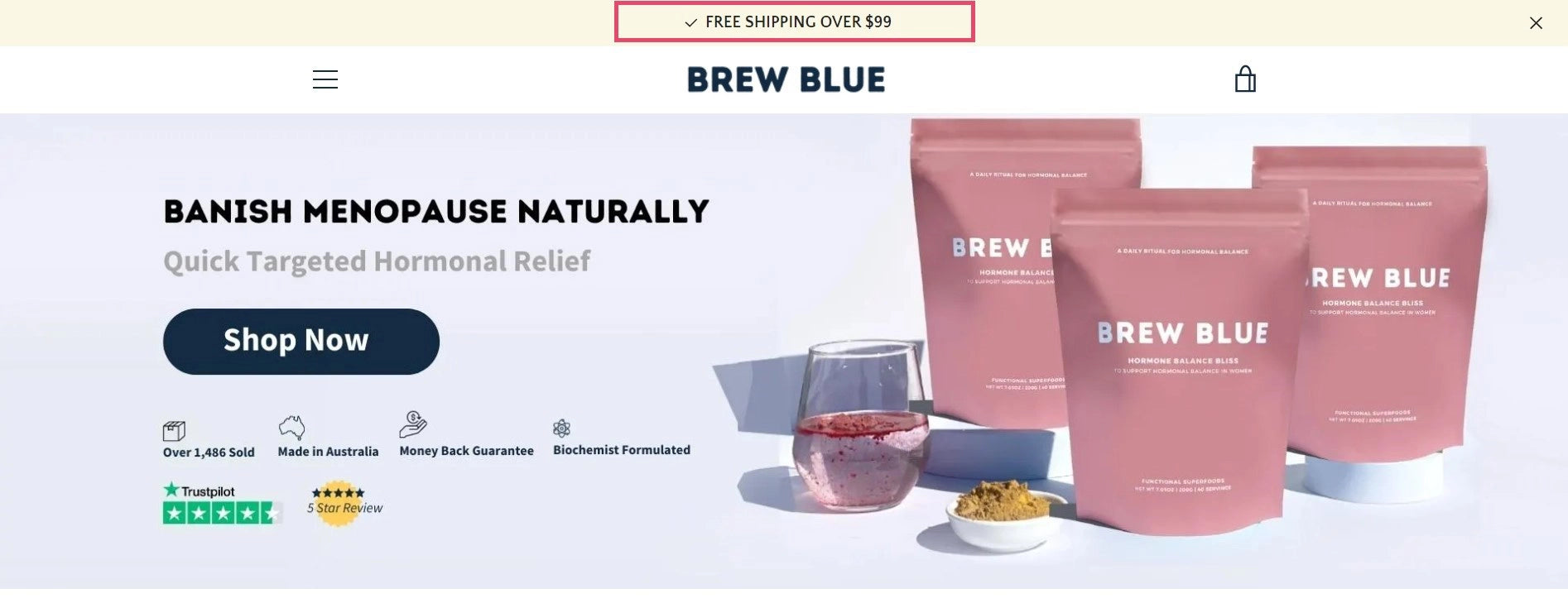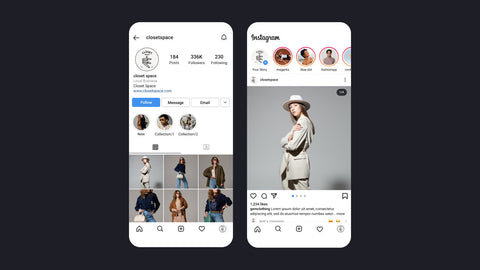How to Do Free Shiping on Shopify? (+Evergreen Tips)

Free shipping is one of the most popular and powerful strategies in eCommerce.
Think of this. When shopping online, what factors do you consider before deciding to buy? You may say the product quality, features, and price.
However, after finalizing all these, if you find you’ll also have to pay some extra bucks for shipping, you may take a pause before completing the payment.
That’s why free shipping is something that you may need to consider for your business.
In this blog post, we’ll go through the step-by-step guide on how to do free shipping on Shopify and share many helpful tips and best practices to effectively implement free shipping on your store.
When to Offer Free Shipping?
Before we learn how to add free shipping on Shopify, the million-dollar question is, should you offer free shipping in the first place?
Well, it depends on two major factors: your profit margin and shipping locations.
If you have a healthy profit margin and your products are shipped from and to within a country, free shipping can be a great strategy to boost your sales and conversions. If that’s not the case, you need to be very strategic about how and when you offer free shipping to your customers.
There are three ways you can manage the cost of offering free shipping:
1. Offer free shipping from your profit margin
For example, let’s say the total base cost of the product is US$50 and your desired profit margin is US$20. So, your selling price will be US$70.
Now, let’s say the shipping cost is $10. if you offer free shipping with the $70 selling price, your profit margin will be reduced from $20 to $10.
2. Offer free shipping without reducing the profit margin
Now, let’s take the same example of the US$50 product. If you increase your product’s selling price from $70 to $80, it will cover your shipping cost.
So, now if you offer free shipping, your profile margin will remain $20. But this will also increase your price.
3. Distribute the cost of free shipping
With this method, you’re not adding the full cost of shipping into your selling price but only some portion. Let’s say 50%. So, in that case, you do not increase the selling price to $80 but just to $75.
This way, you’re slightly reducing your profit marding (from $20 to $15) and also offering free shipping. In other words, the shipping cost of $10 is divided between both you and your customer at $5 each.
Why Should You Offer Free Shipping?
Let’s consider Sophia, for example. Sophia is an aspiring model and she loves buying various skincare products. She usually prefers to buy and stock them for at least a couple of months so that she won’t have to go and buy them frequently.
While scrolling through social media, Sophia finds a compelling advertisement for a subscription box offering her favorite skincare products. She immediately clicks on the ad, checks everything on the product page, and adds the subscription box to the cart.
However, she notices that she need to pay $8.95 for shipping the box every two months. Disappointed with no free shipping offer, Sophia eventually decided to leave and started checking if other brands were offering a similar package with a free shipping offer.
Maergo (formerly X Delivery) researched and analyzed the shipping policies of the top 100 brands from the US in the fashion and apparel industry. The research found that 96% of those brands offered free shipping, including offers with certain spend thresholds (price-based free shipping) and sign-up requirements to qualify for free shipping.
Benefits of Offering Free Shipping on Shopify
Let’s take a look at some of the benefits of free shipping on Shopify:
Increase Your Conversion Rate
Free shipping is one of the fantastic incentives for customers to consider shopping from your brand. That’s the reason you’ll find most brands promoting their free shipping offer at multiple points, including an announcement banner and product page.
Reduce Your Cart Abandonment
According to the study by Baymard Institute, a staggeringly high 48% of customers leave their cart due to too high extra costs, i.e., shipping, tax, and fees. It’s hard to convince customers, and once you do, the last thing you want is customers leaving their carts due to additional shipping charges.
Promote As An Incentive to Boost Email Marketing
Obtaining customer information is crucial to run successful email marketing campaigns. Nearly 70% of customers would be willing to share at least one piece of their personal info to earn a $20 discount. Meanwhile, offering free shipping is an even more effective incentive to obtain both name and email address.
How to Set Up Free Shipping on Shopify?
Let’s explore how to offer free shipping on Shopify using the three main methods:
1. Set Up Free Shipping As A Default Shipping Rate
This is one of the simplest methods to create free shipping on Shopify.
In this method, you can set the default shipping rate as free for all orders. Also, if you want, you can create separate paid shipping rates for a certain product or group of products.
Steps 1: Go to Shopify admin and click on the Settings tab in the bottom left corner. 
Step 2: Click on Shipping and delivery > Manage.

Step 3: Click on the Add rate button for whichever shipping zone you want to offer free shipping.

You can set free shipping for a specific shipping zone (country) only OR for all of them, one by one.
For example, let’s say you’re selling in the US and Canada. But since your fulfillment center is located in the US, you want to offer free shipping in the US only. In that situation, you need to set free shipping for the United States shipping zone only.
Step 4: Click on Add rate > Set up your own rates. Give your rate a name under the section Rate name.
Note: Keep in mind that customers can see this name on the checkout page. So, insert the name carefully.

Keep the Price $0.00, and it will automatically show Free on the right side of the section. Now, click the Done and Save buttons respectively and your free shipping setup is completed for the selected shipping zone.
2. Free Shipping Based On Order Value
This free shipping method is a great strategy to increase your Average Order Value (AOV).
You must’ve already noticed certain online stores that offer free shipping only if you purchase products over a certain value. For example, free shipping on all orders above $75.
By doing this, you can entice your customers to buy more from your brand and it will also increase your overall profit margin to afford the shipping cost.
To create such a free shipping offer, you just need to add a price-based condition in your shipping rate settings.
As explained above, steps 1, 2, and 3 will remain the same:
- Go to Shopify admin > Settings > Shipping and delivery.
- Click on the Manage tab in the General shipping rates section.
- Click on the Add rate button for whichever shipping zone you want to create this free shipping offer.

In step 4, after clicking on the ‘Set up your own rates’ radio button, give your shipping rate a name and keep the price at $0.00 only. Then, click on Add conditions > Based on order price. Mention the price you want to set a threshold for the free shipping offer in the Minimum price section and keep the Maximum price section blank (No limit).
Click on the Done and Save buttons respectively to finish the setting.
3. Free Shipping Based On Product Weight
Just as we created a free shipping offer based on the order value, similarly, we can create a free shipping offer based on the product weight. For example, if you want to give free shipping on orders that are over 20 lb or 10 kg, you can do so using this method.
Although this is not a very popular method to create a free shipping offer, if it suits your business needs, you can definitely go for it.
Once again, your steps 1, 2, and 3 will remain the same:
- Go to Shopify admin > Settings > Shipping and delivery.
- Click on the Manage tab in the General shipping rates section.
- Click on the Add rate button for whichever shipping zone you want to create this free shipping offer.

In step 4, after clicking on the ‘Set up your own rates’ radio button, give your shipping rate a name and keep the price at $0.00 only. Then, click on Add conditions > Based on order item weight. Mention the weight you want to set a threshold for the free shipping offer in the Minimum weight section and keep the Maximum weight section blank (No limit).
Then, click on the Done and Save buttons respectively to finish the setting.
Tips for Offering Free Shipping on Shopify
1. Promote Your Free Shipping Offer
Free shipping is one of the major benefits that customers are looking for in every online store. So, why not highlight and promote it to make your customers aware of your offer?
For example, you can use an Announcement Bar to promote your free shipping offer so that customers can notice as soon as they visit your website.
 Brew Blue offers free shipping on orders over $99 and promotes this offer through an announcement bar so that customers can see it on top of every page. Brew Blue uses GemPages to enhance the store design.
Brew Blue offers free shipping on orders over $99 and promotes this offer through an announcement bar so that customers can see it on top of every page. Brew Blue uses GemPages to enhance the store design.
2. Create A Limited-time Free Shipping Offer
We all know the importance of urgency in eCommerce businesses. You can combine your free shipping offer with an element of urgency by creating a limited-time free shipping offer.
Also, when you introduce this limited-time offer, you should notify your customers not only through your website but also via emails and social media.
LIMITED-TIME OFFER 📣 Spend £70 or more and enjoy FREE delivery on your order!🤩
— McKeever Sports (@theGAAstore) January 22, 2023
Offer Ends Tomorrow - 23/01/23
Hurry - Browse our Sale!
Shop Now at McKeever Sports 🔥 - https://t.co/AJfLISzCpi pic.twitter.com/gC37sFP1N5
3. Create A Membership-exclusive Free Shipping Offer
When talking about this strategy, you might have thought about Amazon, right? Who doesn’t know about the Amazon Prime membership program where customers can get free shipping by joining the program?
This strategy can also cover some cost of free shipping and it can be helpful especially when your profit margins are not that great.

Amazon Prime offers free delivery as one of its major benefits to entice customers to join the program and become paid members with monthly fees.
4. Offer Different Options for Shipping Speeds
Sometimes, customers may be looking for a faster shipping option over a free shipping offer. Offering faster speed along with free shipping may not be feasible considering that the faster shipping option costs higher.
However, you can provide two different options: 1. free shipping with regular speed and 2. faster shipping with a certain shipping charge. This way, the customers who are looking to get urgent delivery of their product would be able to go for the second option and you’ll be able to collect the extra shipping cost from those customers.

Lucy & Yak - known for its comfy organic dungas, conscious clothing, and vibrant prints - offers various delivery options including price-based free shipping and paid fast shipping.
5. Occasional Free Shipping Offers
If you do not have good enough margins to offer free shipping on a continuous basis, you don’t necessarily have to offer it throughout the year. You can pick specific occasions, holidays, or events to delight your customers with a free shipping offer.
You choose the occasions based on your target customers. Some festivals and events are evergreen to promote your free shipping offer such as Valentine’s Day, Thanksgiving Day, Christmas, and so on.
We're offering 💘 FREE SHIPPING 💘 so you can get your Valentine the perfect gift. 🎁
— Dune Jewelry & Co. (@dunejewelry) January 20, 2023
Shop our Valentine's Day Gift Guide: https://t.co/3p5pi06R8h pic.twitter.com/uOo1HZMlX7
Note: All examples showcase screenshots with details taken directly from the brand featured at the time of publishing.
Final Thoughts on Offering Free Shipping on Shopify
Now that we’ve learned how to set free shipping on Shopify, here’s an important thing to keep in mind. In the eCommerce world, any strategies or solutions require brainstorming, research, and analysis. Free shipping is no exception to this.
Whether to offer free shipping on and how to offer free shipping should be a calculated and well-thought-out decision.
More importantly, once you implement any decision, you must evaluate how it’s working for your business. Do not simply start offering free shipping but test and analyze the customer behavior in both scenarios - when you’re offering free shipping and when you’re not.
This way, you’ll be able to make sure that you’re not losing out on money by offering free shipping or not losing the opportunity to increase your conversion rate by not offering free shipping.



 Facebook Community
Facebook Community Change Log
Change Log Help Center
Help Center












